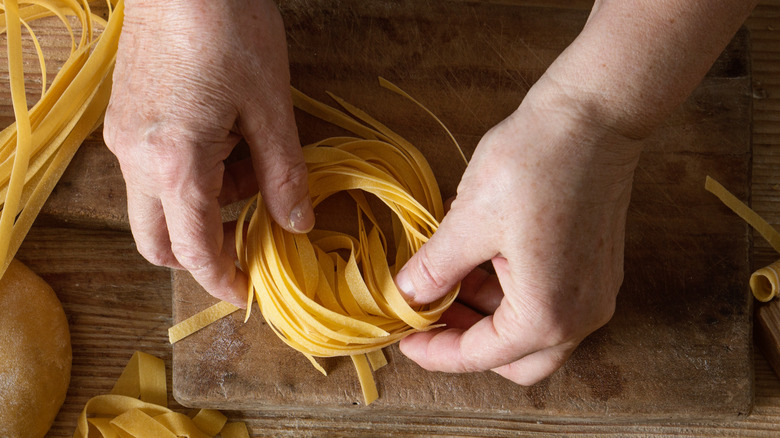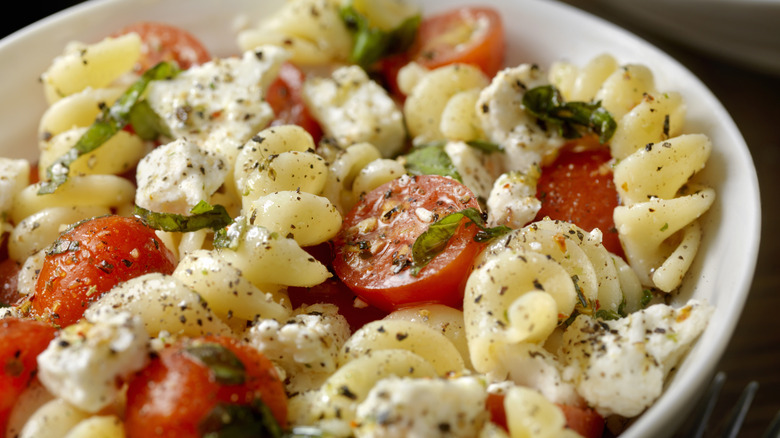Why You Should Never Use Fresh Pasta In Your Pasta Salad
Fresh pasta is good for a lot of things, but pasta salad is, sadly, not one of them. Fresh pasta is at its best served hot out of the pot and is great for carbonara, pesto, or even a simple staple like pasta aglio e olio. Unfortunately, the exact traits that make fresh pasta perfect in these situations make it unsuitable for pasta salad.
Pasta salad requires sturdy pasta that will hold up to refrigeration and stand up to heavier seasonings like dressing or mayonnaise. Fresh pasta is far too delicate to withstand long periods of refrigeration, especially if it is going to be marinated in dressing or oil. As fresh pasta is already so moisture heavy, the presence of any additional moisture will hasten its transformation into mush. Plus, while you can make smaller-shaped fresh pasta, the most popular shapes tend to be on the longer side. When was the last time you used linguine, tagliatelle, or fettuccine in your pasta salad?
As rewarding as it is to make and serve guests fresh pasta, it's clear that it is not the way to go for pasta salad. Fortunately for you, there are plenty of other options. There are many different sizes and shapes of boxed pasta that work well in pasta salad — here's the one that we think works best for pasta salad. However, they all have in common the traits necessary to whip up a successful pasta salad that won't fall apart on your plate.
Use a short, sturdy, boxed pasta
When it comes to pasta salad, it is best to use a sturdy boxed pasta that has been cooked and cooled in the refrigerator for a few hours. This cooling period allows any excess moisture to dry, which comes in handy later when the dressing is applied. The lack of moisture helps the dressing stick to the pasta instead of collecting in a pool at the bottom of the bowl. It also helps if the pasta has ridges or swirls that create little pockets for the dressing to sneak into. This is why pastas like penne, farfalle, fusilli, and orecchiette are so often used. Bronze-die-cut pastas are also great here, as the die creates rough textured ridges.
Boxed pasta is also sturdy enough to maintain its shape after it's been cooked. This has to do with the lack of eggs in most commercial pasta. Omitting eggs makes the pasta easier to dry. Sturdier pasta can stand up to the other ingredients without getting lost or falling apart. Just be sure to slightly undercook your pasta. Even the best boxed pasta will fall apart if cooked for too long.
Smaller-shaped pastas are also easier to handle in terms of mixing and serving, and they can make other salad ingredients stretch farther than they would have on their own. So, put away the eggs and flour, and grab that boxed pasta in the back of your pantry instead.

